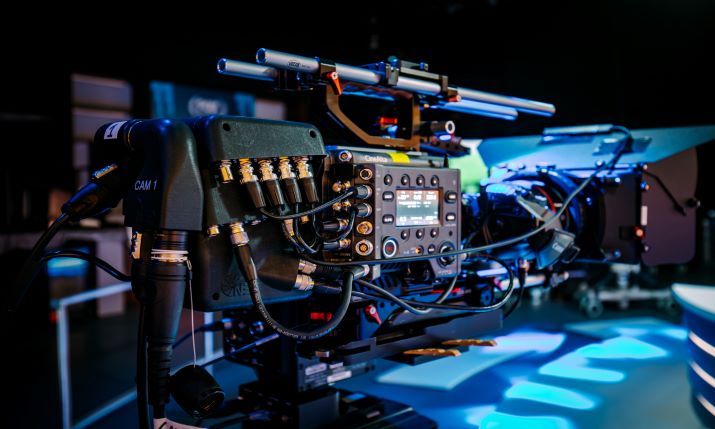Will 2021 mark the death or rise of UHD and HDR?

During lockdown, Fox Sports Netherlands chose the Sony Venice camera with Canon CN7x17 and CN1025 cine prime lenses to get that true cinematic feel for live sports presentation filmed in its studios
By Norbert Paquet, head of live production solutions, Sony Professional, Sony Europe
2020 put a brake on many investments. The whole industry focused its efforts on setting up remote solutions that protected crews, fans and players without degrading viewers’ experience, in creative and innovative ways. The first concern was safety, the second concern was creating compelling content. Was UHD HDR heralded as the next great thing for sports broadcasting then forgotten, sacrificed by many on the altar of business continuity?
As the 2020 sports season nears its end and the pandemic enters its next chapter, the sports industry has settled in with new rules in place. It is once again able to focus on providing more immersive and realistic viewing experiences, exacerbated by the ever-increasing demand for content, with long hours spent at home for most people in Western Europe in different lockdown scenarios.
Progress continues
Despite the understandable focus on dealing with the here and now caused by the pandemic, 2020 saw the first set of UHD HDR sports productions in Europe, notably the launch of new UHD HDR services in France and Germany for football and rugby. Although the 2021 outlook is far from clear, it will probably be THE year of UHD and HDR, just as 2020 was the year of remote workflows. Delayed sporting events in Tokyo and the 2020 UEFA championship will provide great platforms for bringing an enhanced viewing experience. Fans are ready for HDR and UHD, when looking at it from a lens-to-living room perspective, with most televisions and viewing devices HDR enabled, ready to use with streaming services such as Amazon and Netflix.
So, it’s time to ‘backfill’ and make sure the whole workflow is HDR and UHD capable. At Sony, we’ve contributed to many trials and tests over the past couple of years and know just how closely production companies and broadcasters are working together to set up HDR in their existing SDR environments in order to minimise the operational and cost impacts.
Many of today’s implementations use the 2018 FIFA World Cup blueprint as a starting point, then build in new ways of working and equipment that allow full control of each format, with minimal impact on operations and infrastructures. The SR Live workflow is now adopted around most of the productions and broadcasters, following ITU-R recommended practices to maintain legacy contents’ integrity such as graphics and advertising.
The three Rs
2021 will be the year of remote, real and real-time for the sports industry, thanks to distributed UHD and HDR production.

